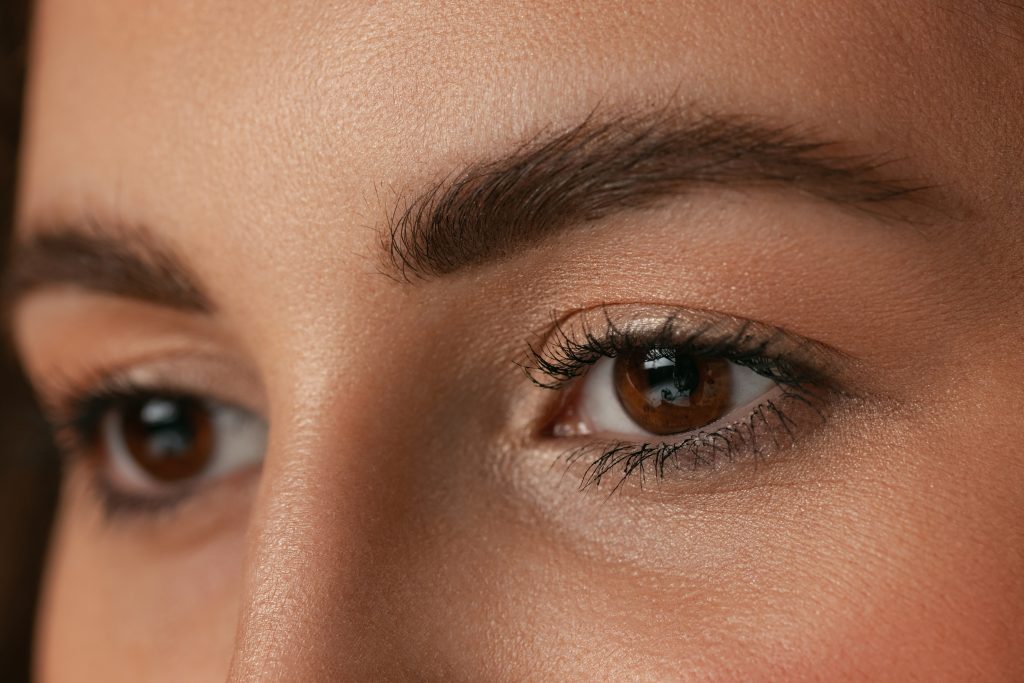
What are the Benefits of a Brow Lift?
The brow typically sits comfortably just above or on the bone in young men and women. As we age, the eyebrow may slowly sink towards the eyelids, causing an angry, tired, or irritated appearance. Some … Read On
West Michigan Plastic Surgery
8175 Creekside Drive, Suite 100
Portage, MI 49024
Phone: (269) 222-1611
Monday–Thursday: 8 a.m.–5 p.m.
Friday: 8 a.m.–4 p.m.
West Michigan Plastic Surgery
3035 Capital Ave SW, Suite 110
Battle Creek, MI 49015
Phone: (269) 222-1611
Tuesday: 8 a.m.–5 p.m.
Friday: 12:30 p.m.–4 p.m.
The signs of aging often appear early in the upper part of the face. Wrinkles across the forehead, frown lines, and furrowed brows can make you look older than you are. The brow also loses its natural arch over time and shifts downward creating a drooping, heavy appearance. A brow lift from West Michigan Plastic Surgery can address these concerns.
Dr. Scott Holley, a board-certified plastic surgeon, delivers a brow lift that refreshes the area above the eyes and gives the face a youthful look. He uses a customized approach to surgery that brings the best results possible to every patient.
A brow lift or forehead surgery rejuvenates the upper face by correcting signs of aging in the forehead and brow area. Forehead surgery corrects droopy brows and reduces frown lines and deep furrows between the brows. In some cases, it can also improve sagging eyelids.
Rejuvenating the upper face with a brow lift involves removing loose skin and tightening the brow to create a smoother forehead and a more pleasing brow shape. In addition, glabellar frown lines will be eliminated or permanently reduced. Forehead surgery is often performed in combination with an eyelid lift or facelift for even better results.
Men and women with horizontal lines and deep furrows are good candidates for a brow lift. Candidates should also be healthy, non-smokers, and have realistic expectations about surgery. Many of the patients seeking a brow lift at West Michigan Plastic Surgery are between the ages of 40-60 years. However, the procedure is suitable for adults of any age wanting to correct frown lines, forehead lines, and low brow position.
Many brow lift patients have used BOTOX® Cosmetic treatments to improve these concerns, but are seeking a more significant, longer-lasting correction. It is also common for patients seeking eyelid surgery to find out at consultation that brow lift surgery may be a more appropriate option.
A brow lift can be performed under local or general anesthesia. Forehead surgery can be done using different surgical techniques including the traditional coronal brow lift and the endoscopic brow lift.
The coronal brow lift involves an incision that runs across the forehead within the hairline from one ear to the other. After the incision is made the surgeon will remove the excess skin and reposition the muscle and tissue below. This technique typically provides the most dramatic results.
The endoscopic brow lift is a more modern technique that involves making small incisions behind the hairline. Loose skin and tissue are removed with the help of an endoscope (surgical video device) and special instruments, and the skin and muscles tightened. There is less scarring with an endoscopic brow lift because the incisions are smaller.
The reduction in lines and furrows after a brow lift results in a smooth, wrinkle-free forehead. Your brow will be lifted and reshaped and frown lines reduced. The results of forehead surgery are immediate and should last for many years.
You should expect mild swelling and bruising after forehead surgery, but these side-effects typically subside within 7 days. Recovery time varies depending on the extent of the procedure, but most patients are back to work within 7-10 days. The endoscopic brow lift generally requires a shorter recovery time because it is a less invasive procedure.
When brow lift surgery is performed by a board-certified plastic surgeon complications are rare. However, like any other major surgery, there are risks associated with forehead surgery. These include loss of sensation along the incision line, bleeding, and infection.
During your consultation, it’s important to ask about the details of the procedure so that you fully understand what’s involved in forehead surgery. Your doctor will also discuss the goals of surgery and review your medical history.
You will be asked to stop taking certain medications, supplements, and anti-inflammatory drugs. You should also stop smoking and limit alcohol consumption. If you have very short hair, you may wish to grow it out before surgery to cover any scars.
You should be up and about within a day or two of surgery, but it’s important to get plenty of rest in the first few days after surgery. However, all strenuous activities should be avoided for several weeks.